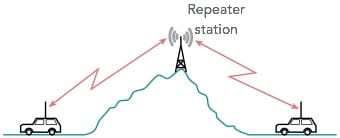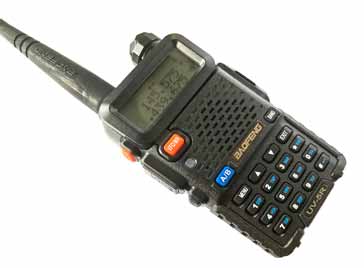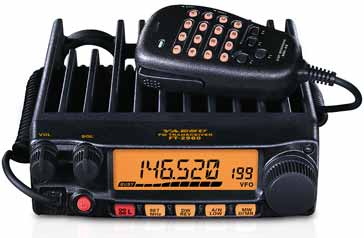Amateur Radio Repeaters
Repeaters are widely used on the amateur radio bands to enable portable and mobile stations in particular to make contacts over longer distances.
Ham radio repeaters includes:
Repeater basics
Repeater channel offsets
CTCSS repeater access
How to use a repeater
Amateur radio repeaters are now a very well establish part of the amateur radio scene. These amateur radio repeaters provide a very valuable service to many stations, and in particular those that do not have particularly good locations or those amateur radio stations that are using only low power.
A repeater, whether an amateur radio repeater or even a commercial repeater is a station that receives a signal on one frequency and simultaneously re-transmits it on another.
Repeaters are sited in good locations with good coverage enabling stations that can access the repeater to be heard on the output and thereby take advantage of the location of the repeater.
Effectively it gives the low power amateur radio station the same coverage as that of the repeater. In this way radio hams using small handheld transceivers, or those using mobile equipment in a motor vehicle are able to make many more contacts than they would otherwise be able to do.

Amateur radio repeater basics
A ham radio repeater is essentially a relay station that receives a signal on one frequency and retransmits the audio on another. Although this sounds simple, amateur radio repeater stations have a number of automatically controlled functions to ensure that they operate efficiently and do not cause any unnecessary interference or radio spectrum pollution.
This means that when operating through an amateur radio repeater it is necessary to have a basic understanding of their operation so that it can be used to provide the most effective performance.
Although the actual operation of a repeater will vary from one repeater to the next, and dependent upon the country in which it is operated, and sometimes the band which is being used, in general the overall concepts are the same. However, before venturing on to use a particular amateur radio repeater, it is best to monitor the station first to understand exactly how it operates.

Initially when a repeater is not in use it will not radiate a signal. This will conserve power and also reduce possible interference.
Amateur radio repeaters are also designed so that spurious signals and noise should also not cause the repeater to transmit. In order to "open" the repeater up there must be a signal on its receive or input frequency. This signal must be sufficiently strong for re-transmission and it must also have a tone to identify that the station being received at the repeater wants its transmission to be re-radiated. There are two methods of achieving this:
- Use of an audio tone burst at the beginning of each transmission
- By using a sub-audible tone system known as CTCSS
Both of these systems will be described in greater detail later on.
Once the repeater has been accessed, the audio from the incoming signal will be re-transmitted on the output frequency of the repeater. However, if the signal falls below the required level the repeater may stop the signal from being re-transmitted - essentially if it becomes to noisy to provide good copy, the repeater will cease to re-radiate the signal.
Also many repeaters have a time out facility. This monitors the time a signal has been relayed and if a certain time has been exceeded then the repeater will go into a busy or time out mode and stop re-transmitting the signal. This facility is included on many amateur radio repeaters to discourage people from talking too long on the repeater. In this way it enables more people to use the repeater.
When a transmission is complete the repeater will detect that the signal has disappeared from its input. After a short delay many amateur radio repeaters will transmit an audio Morse character as an invitation for the next station to transmit. This character is often "K" - the Morse code character that is used to invite people to transmit. Other letters may be used to indicate the CTCSS tone to be used for access to the repeater.

After the end of one transmission the timers are re-set and a new transmission can start. However, this time no tone burst is normally required to access the amateur radio repeater.
Once a contact has been completed and there are no further transmissions appearing on its input, the ham radio repeater will close down. Before any further transmission can be made it will have to be re-opened.
Amateur radio repeater terminology
There are some basic terms that need to be understood as they will be required for setting any equipment you have.
- Input frequency: This is the frequency on which the repeater receives signal - this is the frequency on which your equipment should transmit to access the repeater.
- Output frequency: This is the frequency on which the repeater transmits - this is the frequency on which you should listen.
- Offset: The repeater offset is the difference between the output and input frequencies. A repeater that transmits on 145.700 MHz and listens on 145.100 MHz has an offset of 145.700 - 145.100 = -600 kHz.
- CTCSS tone: CTCSS is the form of repeater access tone that is used these days on most repeaters. The different tones are denoted by letter and the correct tone must be used for each repeater. Sometimes repeaters transmit a Morse letter after the end of a transmission to indicate the tome it requires.
Information about these will be needed when setting any transceiver for repeater operation. The input and output and the offset are obviously related, so these will need to be entered. Also the CTCSS tone needed is also required. Transceivers can be programmed manually and they have the ability to store a number of channels and their associated CTCSS tones. Today it is normally possible to programme the transceiver using a computer. This is generally a lot easer and may be achieved using a spread-sheet style layout for an easy view of all the different stored channels.

Ham radio repeater offset standards
There are standards for the given channels and repeater offsets for different areas.
It is useful to know the different offsets for differnet countries and different bands so that the transceivers can be programmed appropriately.
Repeater access & CTCSS
In order to prevent the repeaters being activated unnecessarily, various methods of accessing them have been devised.If the repeater transmitter was activated purely by the squelch or other circuit detecting a signal on the input, then noise and a host of other signals might activate the repeater. Initially a system of using a tone burst at the beginning of the signal was used.
As the number of repeaters increased, channels were re-used but leaving a sufficient physical distance between them so that stations would only be able to hear one repeater and access it. However under certain conditions it is possible for some stations to access more than one repeater. To overcome this a system of sub-audible tones known as CTCSS tones is now used. Only if the right tone is used can the repeater be accessed.
D-Star repeaters
With the increase in digital modes of transmission, especially for date, but also for voice, it is not surprising that this is being reflected in repeater technology.
D-Star is a form of digital radio which is used particaulrly on the VHF and UHF amateur bands. The system is used by Icom and other digital radios, and there is a network of D-Star compatible repeaters in some countries.
There has not be a significant level of usage of the D-Star capability as a result of the fact that set-up can sometimes be a little difficult.
More Ham Radio Topics:
What is ham radio
Callsigns
Morse code
Voice modes
Digital data modes
QRP operating
Operating awards
Codes & abbreviations
Ham bands overview
Operating via differnet propagation modes
Repeaters
Callsigns
Contact formats
Setting up a shack & buying equipment
Return to Ham radio menu . . .


